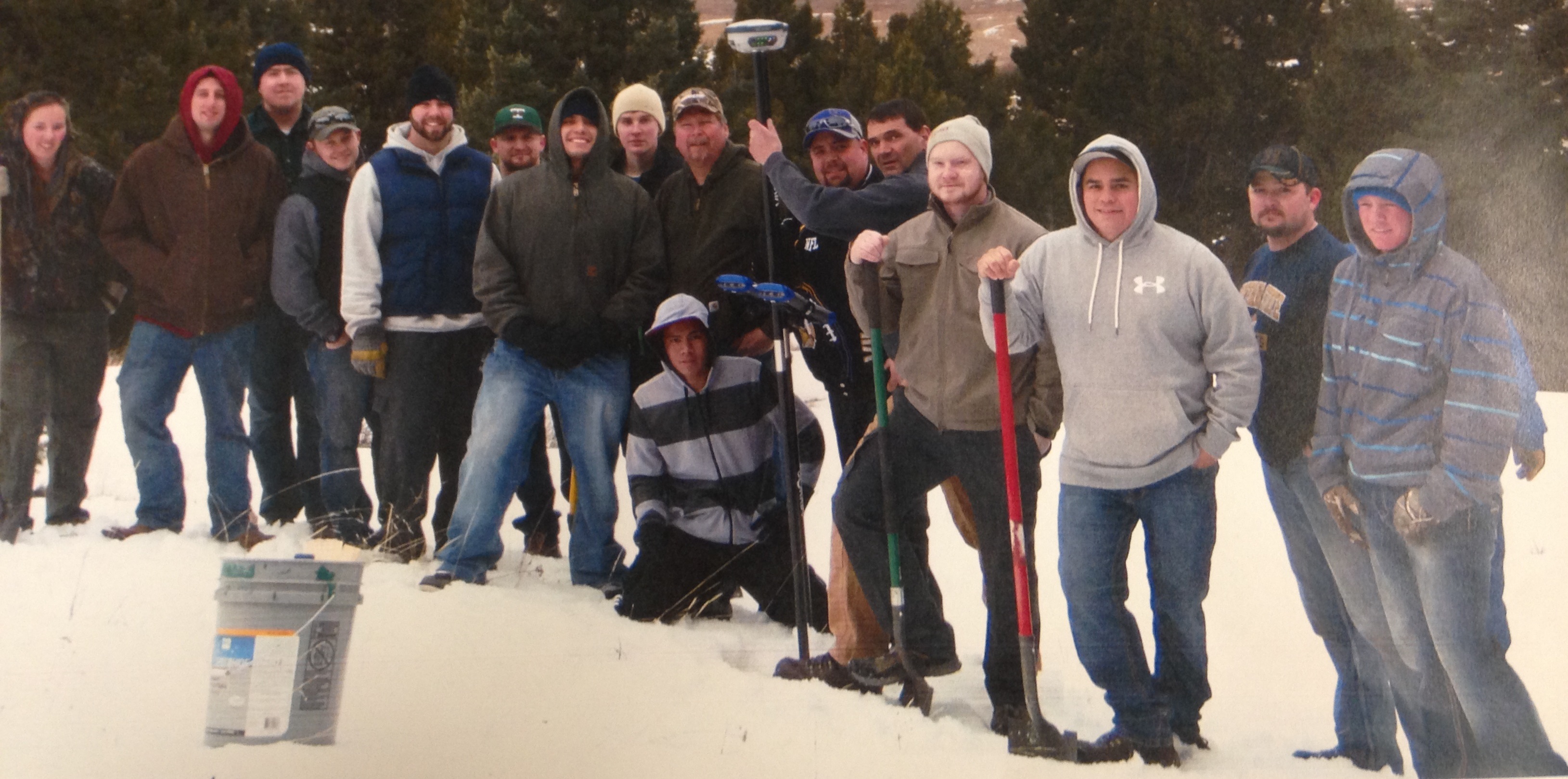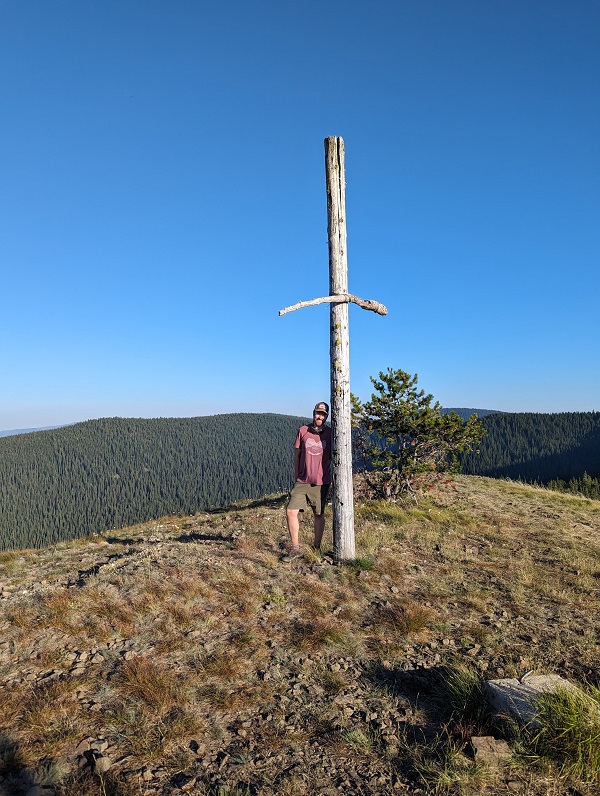Alumnus says Highlands College prepared him for in-demand career in surveying and civil engineering technology

When Alex Jones (Civil Engineering Technology, ’15, Certificate of Land Surveying, ‘21) walks around the world, he sees things most people don’t take notice of: the subtle slope of a sidewalk, drainage systems tucked quietly into the landscape, boundary markers put in place decades before.
“Surveying is an invisible craft,” Jones said. “Everyone lives on some type of property, but how did those lines get established? A surveyor did that. It isn’t crazy, high-concept calculus, it’s real-world stuff. Surveyors carved out a grid across Montana with basic instruments in the late 1800s with some amazing accuracy, and our current land is basically just subdivided from there. It truly is an underappreciated profession, especially considering the impact it has had on the shaping of our country.”

CTE class of 2015
Jones, who lives in Missoula, has always been fascinated by learning how things work, and his career took a bit of a different path to find out where exactly he fit in in the engineering process. He started out at Montana Technological University’s north campus, but found it wasn’t the right fit.

Jones with a survey marker on Dominion Peak.
“I spent three semesters at the main campus pursuing a B.S. in Civil Engineering and realized that my passion was for the technology and tools used in the civil engineering field, thus leading me to transfer to Highlands College where I was able to continue my studies with more emphasis on the areas of engineering and surveying I wanted a career in,” Jones said.
Civil engineering technology students take a wide range of course work including soils materials and testing, business, surveying, concrete technology, civil drafting, geology, statistics, survey-grade GPS control analysis, route surveying, construction-legal documents and specifications, the public land survey system, and site evaluation and testing.
“My biggest challenge was narrowing the scope of what I actually wanted to build my career in,” Jones said. “The engineering field has many disciplines that lead to a wide variety of careers, and it can be difficult deciding on just one area of focus without considering the actual work you enjoy doing.”

Mischevious cows interacting with survey stakes in North Dakota.
Instructor Eric Martin helped Jones match with hands-on learning opportunities that Jones was looking for.
“One thing that benefitted me was already having the experience to be an effective member of a surveying crew,” Jones said. “As a day-one employee, you can go in so many directions with so many civil engineering and land surveying firms because at Highlands College, it’s all hands-on.”
Civil engineering technology was a good fit for Jones because it combines both office and field work. Sometimes he has to be in the office, researching the historical documents that describe previous surveys filed over a century ago, but he then has to go out into the field and try to reconcile what those documents say with modern-day observations.
“You can come up with a game plan in the office, but once you get out there, you almost have to be like a treasure hunter or geocacher,” Jones said.
Jones worked in the Bakken oil fields early in his career as a civil drafter and surveying technician for a Missoula firm.
“I was later recruited to two more Missoula firms where I continued to build upon my knowledge of civil engineering and land surveying while working as a CAD manager and lead designer,” he notes. “Currently, I work for Applied Technology Group, a national AEC consulting firm where I work with engineering and surveying teams across the country, training them on software such as AutoCAD, Civil 3D, ArcGIS, and others while also providing workflow mentoring and design production services.”
Jones has never had to seek out a new employer. They’ve always headhunted him. His LinkedIn inbox is regularly inundated with potential employers.
“The technical trades are really underserved,” Jones said. “A lot of surveyors I’ve worked with are plenty experienced, but are simply more averse to technology because they have been doing the same thing a certain way for 30 years. When the new class comes in, they need to bring new technologies and the efficiencies that follow, there is a huge need. What I see in my day-to-day work are large gaps in the workforce that need to be filled, and a strong desire by these companies to fill these positions. Not just surveying, but civil engineering, architecture, and construction too.”
Highlands College offers tours where students can see classrooms and learn more about civil engineering technology. To request information, click here.